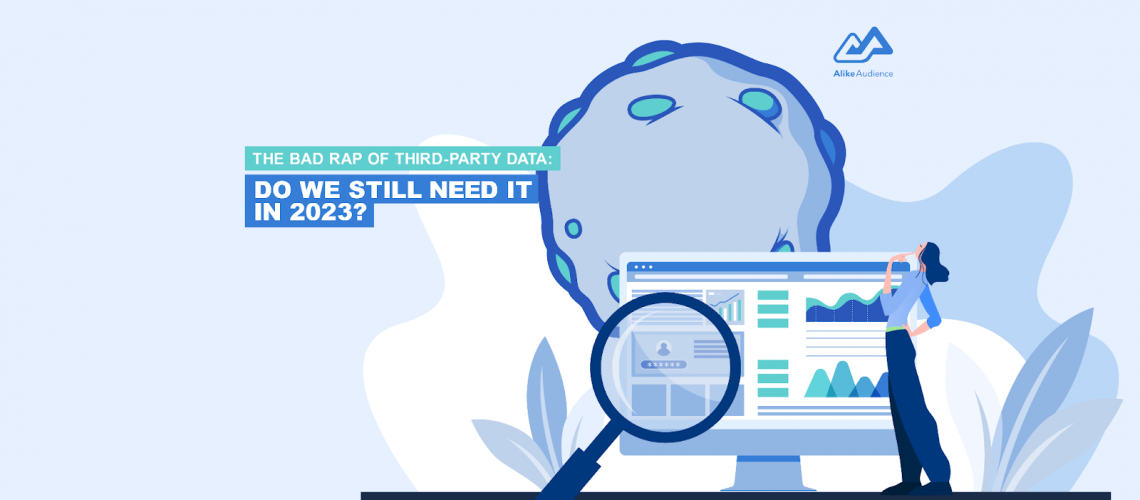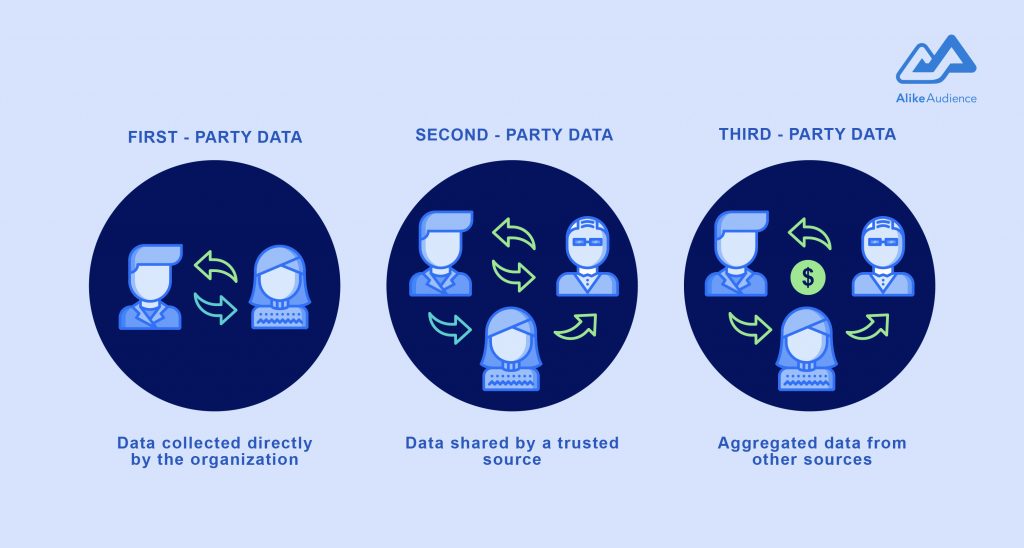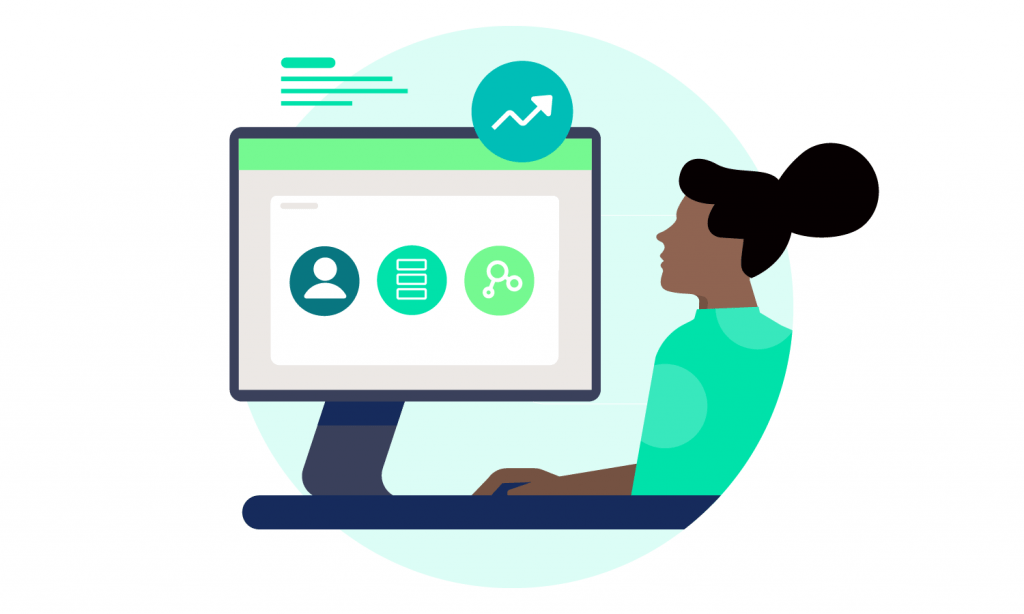For digital marketing to excel in today’s landscape, brands need to know their target audience and customers deeper than they did in the 70s and 80s. This means collecting consumer data at various touchpoints and using it to generate insights that inform decisions, such as which audiences to target in ad campaigns.
Third-party and second-party data have been the primary source of these insights. However, third-party data has come under the heat recently. There have been strong calls for stricter data privacy and data protection regulations that have contributed significantly to marketers’ difficulty in collecting and using customer data.
In this article, we’ll explore the relevance of third-party data in 2023 with expert insights. Should marketers completely stop using third-party data? Or does it still play a role in 2023 and beyond?
Zero-Party, First-Party, Second-Party, and Third-Party Data: What’s the Difference?
Before diving into the relevance of third-party data, we should assess it side-by-side with zero-, first-, and second-party data:
• First-party data is data an entity (brands or agencies) collects about its own audience or customers. This includes data in website analytics, CRMs, owned social media accounts, etc.
• Second-party data is data one entity collects about its audience/customers and gives directly to another entity either by sale or partnership. For example, when an HVAC company shares data about their customers with HVAC manufacturers for an agreed-upon price.
• Zero-party data is data that customers or users willingly and proactively share with an entity. For example, the data from filling forms to access gated content and data from surveys and questionnaires.
• Third-party data, finally, is data purchased from a broker. The third-party data broker in this case did not directly participate in collecting the data but often aggregates data sets from a wide range of sources to create audience profiles.
Most advertisers and marketers would use a combination of these 4 types of data, especially when creating detailed audience segments for programmatic ads.
Each of these have their pros and cons. For Instance, first-party data, which an entity exclusively owns, is usually more relevant and accurate but can be difficult to acquire at scale. Similarly, third-party data provides a wide range of intelligence that one entity cannot collect alone but is usually only available in aggregates.
Second-party data provides insights about similar audiences and is valuable for increasing the reach of your marketing and advertising campaigns, but acquiring it is a tremendous challenge, especially since the unfortunate episode with Cambridge Analytica.
Zero-party data, on the other hand, makes it easy to comply with privacy regulations but it is usually difficult to convince customers to jump over the hurdle of inputting their data.
Corey Weiner, CEO of Jun Group wrote in AdExchanger’s Data-Driven Thinking, “First-party data and zero-party data are similar. They’re both (ideally) consent-based, as in the person whose data is being collected knows it’s being collected. The key difference comes down to volunteering data vs. collecting data.”
He adds, “With zero-party data, the person is actively volunteering specific information, like their preferences, rather than just consenting to their data being collected after the fact.”
But is zero-party data and first-party data truly sufficient for marketers’ and advertisers’ needs?
Related: How Lookalike Modeling Hyper-Targets Audiences at Scale
The Data Debate: Are first- and zero- party data the ONLY solutions?
The great data debate stems from the public’s concern over the ownership, use or misuse, management or mismanagement of personal data. On one side, we have organizations that need data to provide personalized customer experiences and deliver relevant content to audiences (among other purposes). On the other side, we have audiences demanding stronger control of data collection and use.
This isn’t a black-and-white situation — there are extremists on both ends and various stances along the spectrum of the debate. As Arun Kumar, Chief Data/Martech Officer at IPG puts it, “We are caught between a rock and a hard place in the data debate. Hardliners on one side call for crippling regulation to protect people, while extremists on the other side demand people, themselves, be solely responsible for controlling use of their data.”
While the data debate raves on, there’s no debate about the data currency that today’s marketing economy runs on. Many brands still need to actively engage new audiences and meet their demands for targeted or personalized content, solutions, and services.
The fact that 73% of consumers expect companies to understand their unique needs and expectations further emphasizes this point.
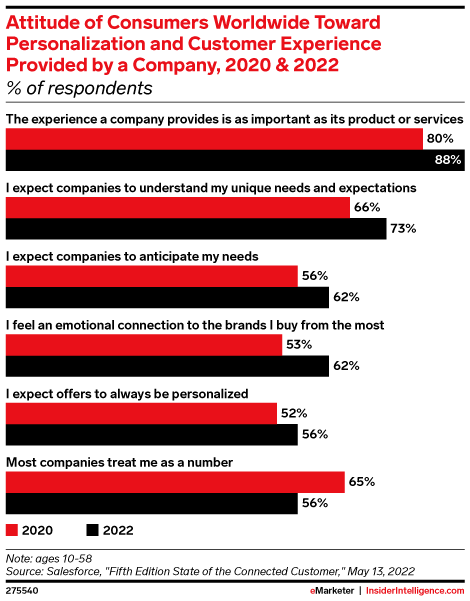
Accenture also revealed that 45% of customers are willing to pay more for a product if it comes with premium service. Using zero-party data for these puts the burden on the customer while collecting first-party data requires significant investment into systems that could take a while to produce ROI.
According to Seraj Bharwani, Chief Strategy Officer at AcuityAds, “There is no question that first-party data would be highly advantageous for targeting and measurement in the absence of third-party cookies. Unfortunately, most brands don’t have legitimate reasons to frequently interact with their potential customers unless they create new content, solutions, and services that consumers would value in exchange for first-party data.”
He adds, “Advertisers should carefully assess the key strengths of their respective brands with regard to authority, product innovation, and interaction frequency to assess the viability of aggregating first-party data through DTC relationships.”
Regardless of the type of data, the focus should be on building customer relationships — the trust that exists between companies and the people they’re trying to reach. Robin Caller, CEO and founder of Overmore Group explained this in his opinion piece,
“GDPR, CCPA, CPRA and nearly every other privacy-related regulation is the product of consumer backlash[…] If we want to collect and use [consumer data] for any marketing purpose, we must explain how we will do so — and obtain consent and permissions. But to get that agreement, the consumer must understand the trade-off. They need to understand what’s in it for them and see real value in the arrangement.”
This is not solely exclusive to first- or zero-party data. Certain third-party data vendors in the market have shifted the focus of their data collection strategy towards consumer consent and opted-in IDs, while continuing to deliver scale and accuracy.
Can third-party data still play a role in the audience targeting?
Related: iOS 14 Impact on Advertising: How Marketers can Adapt to Privacy Changes
Third-Party Data: Sources, Uses, Pros, and Cons
Third-party data for marketers comes from third-party audience data providers or is bought from third-party data brokers. This data is usually collected and aggregated from various third-party data sources such as websites, apps, and plugins. This goes through demand-side platforms (DSPs) to advertisers.
The right third-party data audience provider, such as AlikeAudience, will only collect and aggregate consumer-consented, opted-in data like mobile advertising IDs (MAIDs), hashed emails, and other consented personally-identifiable information (PII).
“Consumer-consented” data means data that comes from those who willingly typed in their email addresses or phone numbers on websites or agreed to cross-app-tracking on their phones. These consumers understand the opt-in value exchange, and want to get targeted and personalized ads. Hence, they’re more likely to be engaged with ads and take action, improving campaign performance and conversions.
AlikeAudience cleanses and processes this kind of consumer-consented data into predictive attributes and segment users based on these attributes. Each audience segment contains at least 1000 user identities, hashed (concealed), according to each demand-side platform’s requirement, industry standards, and privacy laws.
This third-party data collection model is not only privacy-compliant, but better supports the practical application of data in marketing, such as massive reach and engagement in programmatic advertising.
Additionally, it helps with accurately predicting purchase intent and enriching first-party data. Detailed third-party data also provide granular insights that help marketers make data-driven decisions such as allocating ad budget according to seasonal shopping trends.
The verdict then – is – third-party data CAN still play a big role in audience targeting and programmatic advertising – but brands will need to partner with ethical, privacy-compliant data vendors who exclusively work with consumer-consented data.
Read more: What is Data Quality and Why Is It Important for Programmatic Advertisers?
How to Use Third-Party Data Ethically in Digital Marketing

Forrester conducted a survey in 2020 that revealed 27% of global marketing decision-makers are concerned about data ethics, merely a quarter of the advertisers that need to lead the ethical use of third-party data — not just because of the legal repercussions, but also because it’s the right thing to do.
Ethics in data-driven marketing is also beneficial in building a trustworthy reputation for the company or organization; a priceless brand image. It creates customer-centricity in marketing campaigns, making them more effective, and also provides future-proofing for your marketing strategy.
Here’s how you can use third-party data ethically, especially when combined with first-party data for high-ROI direct and programmatic buys:
1. Set rules for data usage: To keep employees on track with your data privacy promise and ethical data usage, leaders should set clear rules about what’s okay to do with customer data and what is not.
2. Communicate your data values: While setting rules can help align the company internally with your data values, you have to let the public know as well. This includes partners, distributors, and customers. You can express it as a core value of your organization.
3. Collect, manage, and use data you need: Only use data you absolutely need, not what you think matters. Hoarding data that isn’t directly useful to you can potentially hurt customers in case of a breach.
4. Consider the impact of your overall data use: In 2019, Apple’s credit card led to an investigation when one user complained that his limit was 20 times higher than his wife’s, who actually had a better credit score. When processing data, ensure you assess the algorithms or AI used; make sure there’s no bias that could inadvertently create problems in your value chain.
How Advertisers Can Keep Up With Third-Party Data Changes
There are several ways marketers and advertisers can keep up with the changes in the use of third-party data well past 2023. For example, they can start investing in systems to collect zero- and first-party data. They can, for instance, invest in customer survey data although this lacks in-depth information to truly understand customer pain points and motivations.
They can also mine social chatter. These are the conversations people are having about your brand and solutions on social media. You will often need expensive tools to dig into the ocean of social media data created per second for keywords, sentiment, and competitor feedback.
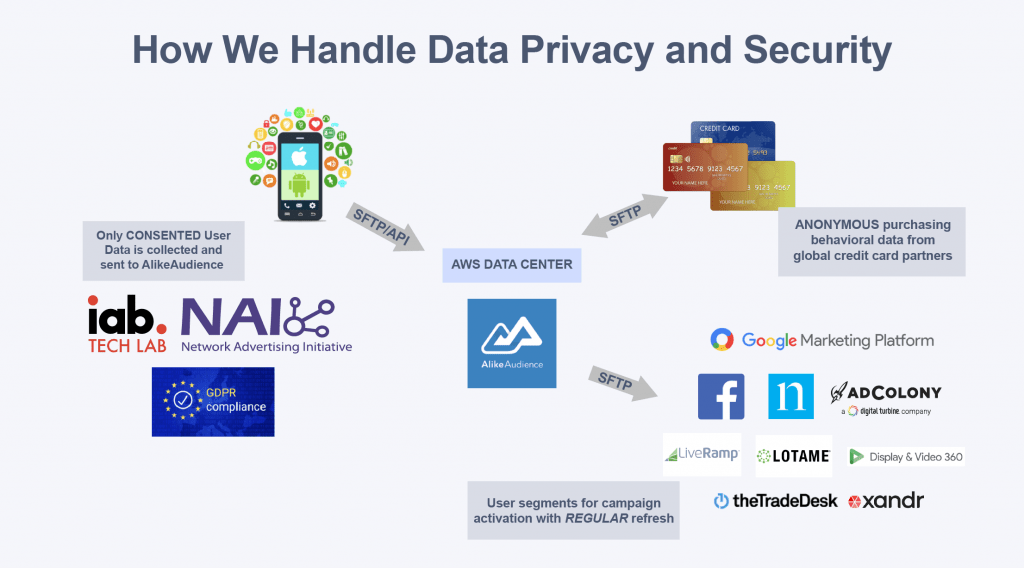
There’s also the option to work with a third-party data provider, such as AlikeAudience which has 7000+ high-value target audience data segments. This is sourced from opted-in IDs AND anonymous purchase records for creating accurately targeted campaigns at scale, all while being GDPR and CCPA compliant.
Verdict: We Still Need Third-Party Data in 2023
First-party and zero-party data alone cannot fill in the gaps you need to provide the personalized experience customers are demanding and are willing to pay a premium for.
Third-party data will remain relevant not only for this reason but mostly because what people want is transparency in how their data is used. In fact, audiences welcome brands they trust to collect and use this data to deliver relevant content to them.
However, when choosing third-party data vendors to work with, brands will need to ask the right questions and make sure that the partner offers ethical, privacy-complaint, consumer-consented audience segments at scale and accuracy.
Contact our data strategist for custom solutions or find us on your favorite DSP.

